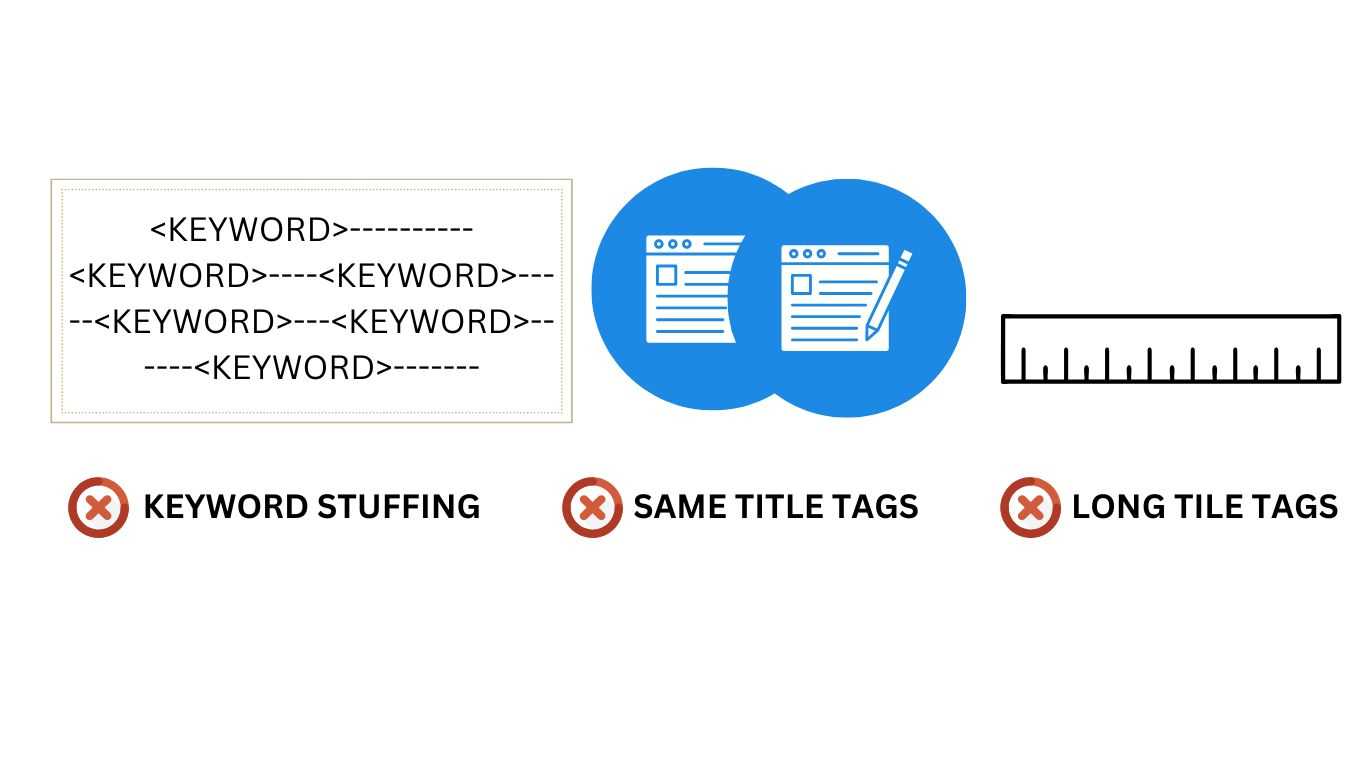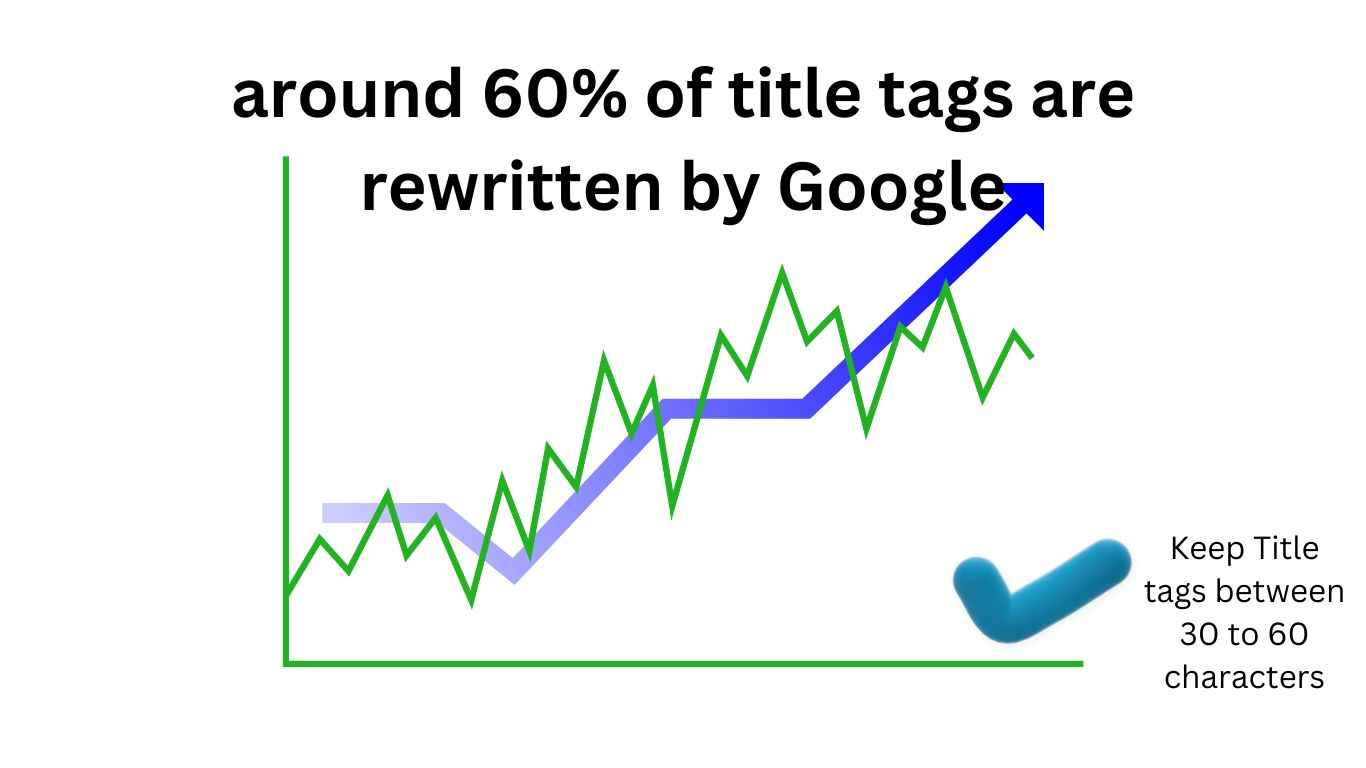6 Title Tag Mistakes That Could Sink Your SEO
In the previous article “What is Title Tag Optimization? 6 Easy Tips for Beginners”, we discussed creating compelling and attractive title tags. In this article, we will discuss about 6 title tag mistakes that could sink your SEO.
As you all know Title tags play a pivotal role in search engine optimization (SEO). As the first impression readers get in search engine results, title tags significantly impact click-through rates (CTR) and search rankings. Crafting effective title tags requires understanding best practices, leveraging optimization tools, and following Google’s guidance. Here we’ll cover common mistakes to avoid in writing titles, title tag examples, optimization tools, Google’s recommendations, reasons for title tag rewrites, and frequently asked questions.
Common Title Tag Mistakes

- Keyword Stuffing: Overloading titles with keywords damages readability and can result in search engine penalties. Tip: You should use one or two primary keywords, and integrate them naturally within the title.
- Usage of Generic Titles: Generic titles like “Services” or “Products” fail to attract more clicks and provide no context. Fix: Use specific and simple terms, such as “6 title tag mistakes that could sink your SEO.”
- Missing Keywords: If you’re not using target keywords, it could reduce visibility in search results. And you’ll lose your audience.
- Fix: To resolve this, perform keyword research and integrate primary and secondary keywords.
- Duplicate Titles: The pages with the same title tags confuse users and search engines.
- Fix: So, create different, unique, descriptive titles for every web
- Lengthy title tags: If your titles are too long then they may get cut off, leaving incomplete information in search results.
- Fix: You should keep your titles between 50-60 characters to maximize visibility.
- Deceptive Titles: Creating clickbait titles that don’t align with content disappoints users and increases bounce rates.
- Fix: Choose the title that reflects the page content accurately.
Google sometimes rewrites a significant portion of title tags in search results to improve alignment with user queries or the content itself. This can be frustrating for owners but is often necessary for a better user experience. According to research, around 60% of title tags are rewritten by Google; which means that for a large portion of websites, the title tag you set might not be properly optimized.

Title Tag Examples
Good and Unique Title Tag Examples:
“5 tips on how to create good seasonal content”
Why it works: It includes a target keyword “seasonal content”, is descriptive, and engages users with “Good” and “5 tips.” It appeals directly to the target audience.
“Website Development Service- Hire Best Web Developers“
Why it works: Highlights a key service with convincing language “Best”, making it catchy and clear. It has cartel value and action-oriented phrasing to attract clicks.
“How to create a Compelling Title Tags“
Why it works: This example contains a focus keyword (“Title Tags”) and encourages immediate action.

Bad and Poorly Optimized Title Tag Examples:
“Home”
Issue: This is unclear and uninformative, offering no insight into the page’s content. Surely, users and search engines cannot determine the purpose of the page.
“Buy Shoes Online Best Prices Discount Shoes Online”
Issue: Keyword stuffing (Shoes, online) reduces readability and may cause search engine penalties. The title also lacks flow, making it unattractive to users.
“Page 1”
Issue: It’s completely generic and devoid of context. It fails to convey any meaningful information about the content.
Best Practices:
- Keep it under 60 characters to avoid truncation in search results.
- Include primary keywords naturally while avoiding keyword stuffing.
- Make it descriptive, clear, and engaging to encourage clicks.
Tools for Title Tag Optimization
The Optimization of title tags effectively requires the right set of tools to analyze, improve, and implement changes. Here are some top tools you can use:
Yoast SEO (WordPress Plugin)
Ahrefs
SEMrush
Moz Title Tag Preview Tool
Google Search Console
Rank Math
Google Guidelines on SEO Title Tags
Google aims to give the best results to the users. To improve user experience Google offers explicit guidelines to ensure your title tags align with their best practices and provide value to users.
Google Officially stated:
“Make sure every page on your site has a title specified in the <title> element.
Write descriptive and concise text for your <title> elements.
Avoid keyword stuffing.
Avoid repeated or boilerplate text in <title> elements.
Brand your titles concisely.
Make it clear which text is the main title for the page.
Be careful about disallowing search engines from crawling your pages.
Use the same language and writing system (meaning, the script or alphabet for a given language) as the primary content on your pages.
Avoid including flight price information in <title> elements.”
Final Thoughts
Title tags are a critical part of SEO that directly influences how users and search engines perceive your content. But by following Google’s guidelines, leveraging optimization tools, and avoiding common mistakes, you can craft effective title tags that enhance visibility and drive organic traffic. Whether running a blog, an e-commerce store, or a corporate site, mastering title tag optimization is a surefire way to boost your online presence.







